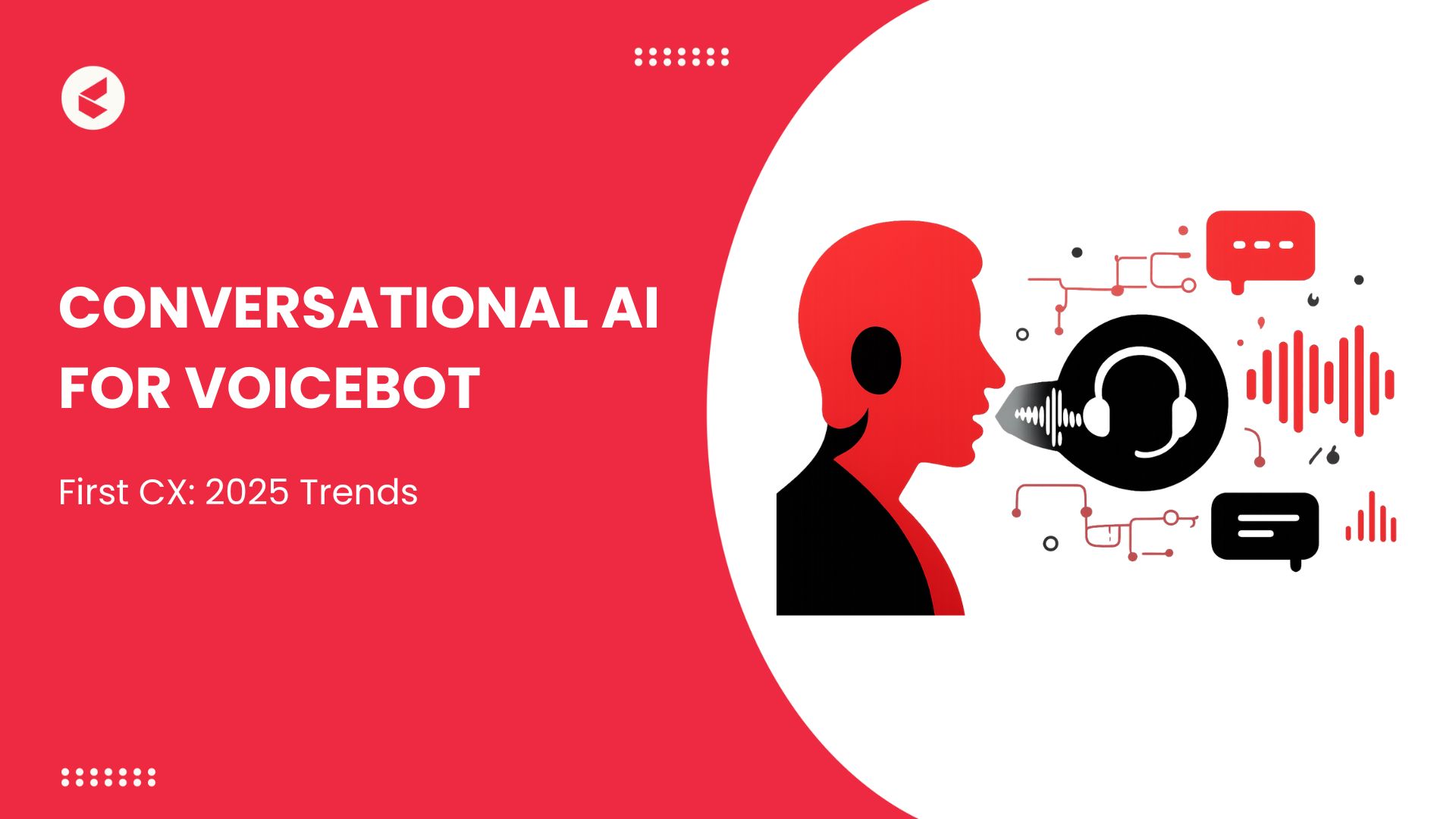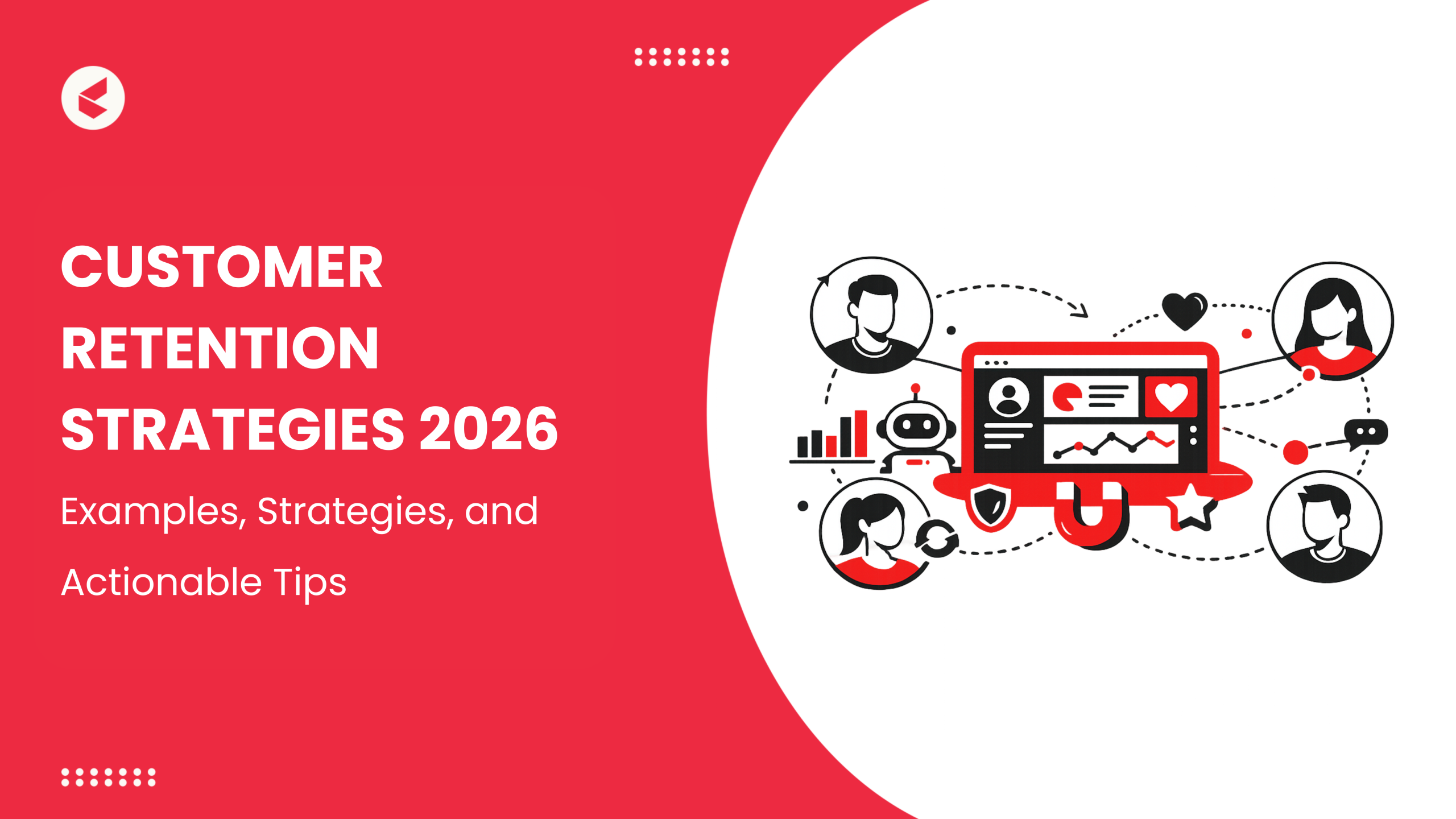In a recent survey, 71% of consumers said they expect companies to offer real-time support—and for many, that means speaking directly. Whether it’s rescheduling a delivery while driving or checking order status hands-free, customers increasingly prefer voice as the most natural and immediate way to communicate. Voice support offers a fast, accessible, and human-like interaction—available anytime.
Companies across industries like banking and e-commerce are using conversational AI for voicebots to maintain consistent, context-aware interactions. For instance, banks are deploying voicebots to authenticate users and provide real-time account information, while e-commerce brands use them for order tracking and post-delivery feedback.
Improvements in speech technology have also made voicebots more effective. They can handle different accents, keep track of conversation details, and give clear, understandable responses. Many companies using these tools report clear operational benefits.
The business impact is significant. Juniper Research estimated that AI-powered voicebots will manage around $58 billion in retail spending by 2025, up from $15 billion in 2021. This growth reflects stronger demand for reliable voice interactions that customers can use comfortably and with confidence.
This blog builds on our earlier look at voice in customer experience and examines Voicebot CX trends for 2025 in more detail.
It provides a practical view of AI-powered customer experience, supporting organizations as they plan for voice-first strategies that improve service quality.
What Does “Voicebot-First CX” Really Mean?
“Voicebot-first CX” means voice is the primary channel for customer interactions—driven by conversational AI. Unlike chatbot-led (text-based) or omnichannel-first strategies (which treat all channels equally), voicebot-first puts spoken conversation at the center of support design.
This approach uses speech recognition and language understanding to manage full conversations—whether over the phone or on voice-enabled devices.
Examples of how voice AI is shaping customer support include:
- Replacing traditional IVR systems with contextual AI that tailors responses based on caller history and intent
- Using voice intent analysis for smart routing—connecting customers to the right team without repeated explanations
- Making proactive, automated calls to confirm appointments or deliver important updates
Together, these applications support a more consistent, context-aware, and human-like customer experience.
Why 2025 Will Be the Tipping Point for Voice AI in CX
Customer expectations for service quality are increasing. Support delivered through conversational AI for voicebot is expected to provide clear, responsive communication similar to speaking with a well-trained human agent.
According to Salesforce, 80% of customers consider the experience a company provides to be as important as its products or services. This highlights the importance of offering reliable, straightforward support that customers can trust and use easily.
1. Growth in Voice-Enabled Devices
Statista reported there would be about 8.4 billion voice assistants in use worldwide in 2024. This was more than the global population. In the United States, around 153.5 million people are expected to use voice assistants by 2026.
2. Multilingual Support Becomes Essential
GlobeNewswire data indicates that 75% of customers prefer businesses that offer help in their native language. As companies expand into new markets, offering multilingual support becomes a competitive necessity.
For example, Domino’s Pizza India uses a multilingual voicebot that handles customer queries in English, Hindi, Tamil, and Kannada — enabling consistent service across diverse regions.
Voicebots that can handle multiple languages not only enhance accessibility but also build trust by helping customers communicate comfortably in their native tongue.
3. Enterprise Demand for Scalable, Always-On Support
Businesses aim to offer consistent voice support that can manage large volumes of calls while maintaining quality. “Current voicebot systems can handle routine questions using intent recognition and early-stage emotion detection, allowing human agents to focus on more complex requests.”
Industry research supports these trends. Grand View Research forecasts the global voice recognition market will grow at a CAGR of 14.6%, reaching $53.67 billion by 2030.
The Business Research Company expects the no-code conversational AI market to expand to $7.09 billion in 2025, with longer-term projections nearing $50 billion by 2030.
These factors are shaping voicebot CX trends and defining the role of voice AI in customer support.
Key Capabilities Driving Voicebot-First Customer Support
Meeting the goals of voicebot CX trends requires customer support solutions with robust, practical capabilities that deliver real-time support, contextual awareness, and intelligent routing.
1. Advanced Intent Detection and Context Retention
Understanding the what and why behind customer queries is critical to delivering frictionless support.
Voicebots can understand customer requests and track details during the conversation. This prevents customers from repeating information, making interactions clearer and faster.
Platforms like Kapture CX include tools that help teams design these conversations clearly and maintain context throughout.
2. Real-Time Multilingual Conversation Support
With growing customer bases across languages and regions, voicebots must respond naturally in multiple languages.
Many businesses have customers in different regions. Voicebots with multilingual support allow service in the languages that customers use. Solutions such as Kapture CX offer this support to help businesses deliver consistent service in local languages.
3. Voice Analytics for CX Improvement
Actionable insights from customer interactions help businesses refine service quality and train teams more effectively.
Voice analytics can measure things like call length, customer sentiment, resolution time, and common topics. This data helps teams understand customer needs, improve training, and adjust processes.
Kapture CX provides dashboards to make it easier for teams to monitor these trends over time.
4. Escalation to Human Agents
No matter how smart a voicebot is, customers must be able to reach a human when needed—without losing context.
When an issue needs human attention, voicebots can transfer the call along with all relevant conversation details. This ensures agents have the context they need and customers do not need to repeat information.
5. CRM and Knowledge Base Integration
Seamless access to real-time customer and product data powers faster, more accurate responses.
Integration with CRM systems and knowledge bases enables voicebots to access complete customer records and company information. This supports more accurate and consistent responses throughout the interaction.
6. Smart Voice Routing Based on Sentiment and Tone
Voicebots can do more than respond—they can sense urgency and emotion to guide the conversation intelligently.
Voicebots that can review tone and sentiment during calls help identify urgency or emotional cues. This helps route calls to the appropriate agent or team for more timely and suitable support.
Top 7 Conversational AI Trends for Voicebot-First CX in 2025
The future of voicebot CX is shaped by technology that companies can adopt at different stages. Each example shows how these developments improve the quality of AI-powered customer experience.
Foundational Trends (Adopt Now)
These capabilities form the basis of effective voicebot support. They can be implemented early to improve service and meet rising expectations for accessibility and responsiveness.
1. Proactive Voicebots for Outbound CX
Proactive voicebots help teams engage with customers without waiting for them to reach out first. AI-driven outbound calls can deliver updates, reminders, and feedback requests in natural language.
This approach supports better engagement and reduces manual effort.
Use Case
A Kapture CX voicebot calls a banking customer to confirm a loan application appointment and collect pre-call KYC responses in their preferred language, logging the data directly into the CRM.
2. Multilingual and Localized Voice Support
Businesses that serve different regions benefit from voicebots that support multiple languages and adjust tone for local audiences. This helps customers communicate more easily in the language they prefer.
Use Case
A buyer checks an order status in Hindi, while another customer asks about delivery in Kannada. Both conversations take place on the same system with clear, accurate replies.
3. No-Code Voicebot Builders
No-code tools allow CX teams to create and update workflows without developer support. This helps teams respond quickly to new requirements while reducing development costs.
Use Case
A Kapture CX support manager uses a visual drag-and-drop builder to set up a return and refund call flow in a few minutes.
Evolving Trends (For Growing Teams)
These trends support teams that have established basic CX voicebot capabilities and want to improve personalization, routing, and empathy.
4. Emotion-Aware Voicebots
Voicebots can monitor tone, speech patterns, and hesitation to detect emotions like confusion, stress, or frustration. When needed, they adapt responses or escalate to a human agent for empathetic handling.
Use Case
A patient calling a hospital’s helpline sounds anxious while asking about medication side effects. The voicebot detects the stress in the caller’s voice and says, “Let me quickly connect you with a medical support agent,” and transfers the call with full context preserved.
5. Smart Voice Routing with CRM Context
Smart routing connects customers to the right team by combining their history and ticket information. This reduces the need for transfers and helps agents start with the right context.
Use Case
A VIP customer’s call is routed directly to the premium support team. The agent sees their full purchase history and previous conversations without asking the customer to repeat information.
Cutting-Edge Trends (Ahead of the Curve)
These capabilities represent more advanced solutions that help businesses deliver highly personalized and efficient voice AI in customer support. They can set the foundation for longer-term improvements.
6. Hyper-Personalized Voice Scripts
Voicebots can create dynamic responses that reflect a customer’s journey and history. By using CRM data, the system can greet customers with context-specific messages that feel relevant and personal.
Use Case
“Hi Anjali, I saw your recent exchange request. Are you calling about the new size update?” shows the bot can reference recent activity in real time.
7. Voice Analytics for Support Optimization
Voice analytics tools track conversations to highlight common issues, sentiment trends, and workflow gaps. Managers can use these insights to improve training and update processes.
Use Case
A CX head notices that most weekend calls involve delivery delays. The team updates the voicebot to share weekend-specific delivery updates proactively, reducing the number of incoming calls.
Bonus Trend: RAG-Powered Voicebots (Retrieval-Augmented Generation)
Think of RAG as a voicebot’s “live search engine”—it finds answers from actual company sources (like knowledge bases or CRMs) instead of relying only on what it was trained on.
Retrieval-Augmented Generation allows voicebots to pull live information from knowledge bases or CRM records rather than using only pre-written scripts. This improves the accuracy and relevance of answers.
Use Case
“Let me read the latest refund policy for your product category…” is provided directly from the Help Center while the customer is on the call.
The table below summarizes each trend, its adoption stage, and the key benefit for customer experience.
| Trend | Adoption Stage | What It Is | CX Benefit |
| Proactive Voicebots for Outbound CX | Foundational | AI-initiated calls that share updates, reminders, or ask for feedback | Encourages timely customer engagement |
| Multilingual and Localized Voice Support | Foundational | Conversations in multiple languages with an appropriate tone | Supports customers in their preferred language |
| No-Code Voicebot Builders | Foundational | Tools to create or adjust voicebot workflows without coding | Speeds up changes and reduces reliance on technical teams |
| Emotion-Aware Voicebots | Evolving | Identifies frustration or hesitation in a caller’s tone | Enables empathetic responses and smoother escalation |
| Smart Voice Routing with CRM Context | Evolving | Uses customer history and issue type to direct calls | Connects customers to the right team more quickly |
| Hyper-Personalized Voice Scripts | Cutting-Edge | Custom greetings and responses based on customer history | Builds trust through more personal, relevant interactions |
| Voice Analytics for Support Optimization | Cutting-Edge | Reviews call data to find patterns and improve processes | Helps refine training and service quality over time |
| RAG-Powered Voicebots (Bonus) | Cutting-Edge | Retrieves live answers from knowledge bases or CRM systems | Provides accurate, up-to-date information in real time |
How Support Teams Can Prepare for the Voicebot Era
Support teams planning for voicebot CX should focus on practical steps that build effective, reliable systems.
1. Define Clear Goals and Use Cases
Begin by deciding which tasks work well for voicebot automation, like routine questions, order tracking, or setting appointments. Teams should map customer needs and plan clear conversation flows.
2. Invest in Strong Conversational Design
Teams benefit from training in clear and user-friendly prompt design. Prompts should offer straightforward instructions and confirmations. Well-designed conversations also include easy ways for customers to move to a live agent if needed.
3. Use No-Code Tools and Test Regularly
Visual workflow builders let support teams create and update voicebot scripts without developer resources. Regular testing with real customers helps uncover unclear steps or confusing language before going live.
4. Integrate with CRM and Analytics
Linking the AI voicebot to CRM systems and knowledge bases allows it to use current customer information. Kapture CX connects with CRM data to support personalized interactions. Analytics tools help teams track performance and find areas to improve.
5. Plan for Smooth Escalations
It is important to design clear handoff processes to human agents. Transfers should include full conversation history and any verification steps so agents can pick up without needing customers to repeat details.
Where Kapture Fits in the Voicebot-Centric Future
Kapture CX provides a platform designed to support a voicebot-first CX strategy through practical tools and integrations.
- CRM integration lets voicebots use customer history, orders, and past tickets for more specific responses.
- Multilingual support offers services in over 40 languages for consistent experiences in all regions.
- Voice analytics dashboards help teams review sentiment, topics, and resolution data to improve service.
- Emotion-based routing identifies frustration or confusion and moves calls to human agents when needed.
- Retrieval-Augmented Generation (RAG) lets voicebots use information from knowledge bases and CRM records to give current answers.
These features support the use of conversational AI trends in a practical way. With Kapture CX, teams can lower wait times, improve self-service, and maintain quality as they expand voicebot support.
Voice Is the Future of Human-Like CX
Voice support is an important part of customer service, offering clear conversation with consistent and efficient handling. Many businesses face challenges in building voice solutions that truly understand customer needs while fitting smoothly with existing systems.
Kapture CX offers practical tools for this, including customizable voice flows, CRM integration, multilingual capabilities, and effective escalation to human agents.
Book a personalized demo with Kapture CX to explore how these features help deliver consistent, reliable customer support with advanced voicebot capabilities.
FAQs
It places spoken interaction at the core of customer support, ensuring voice is designed as the primary channel for routine questions and service requests.
Foundational features like outbound calls, multilingual support, and no-code builders can usually be set up in a few weeks, depending on the systems and requirements.
They can handle routine tasks effectively, while emotion-aware design and clear escalation paths ensure complex or sensitive issues reach human agents.
Advanced systems use layered speech recognition and language-specific models to hold natural conversations in multiple languages and dialects.
Voice analytics tracks call duration, sentiment, common topics, and resolution rates to help teams identify trends and improve service quality.













